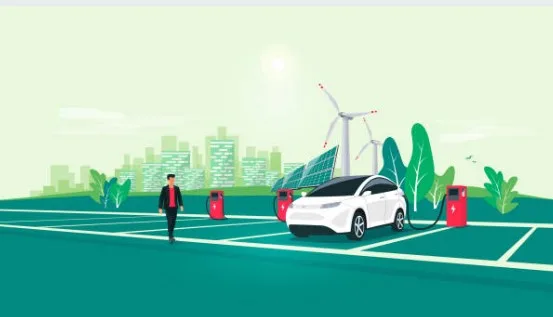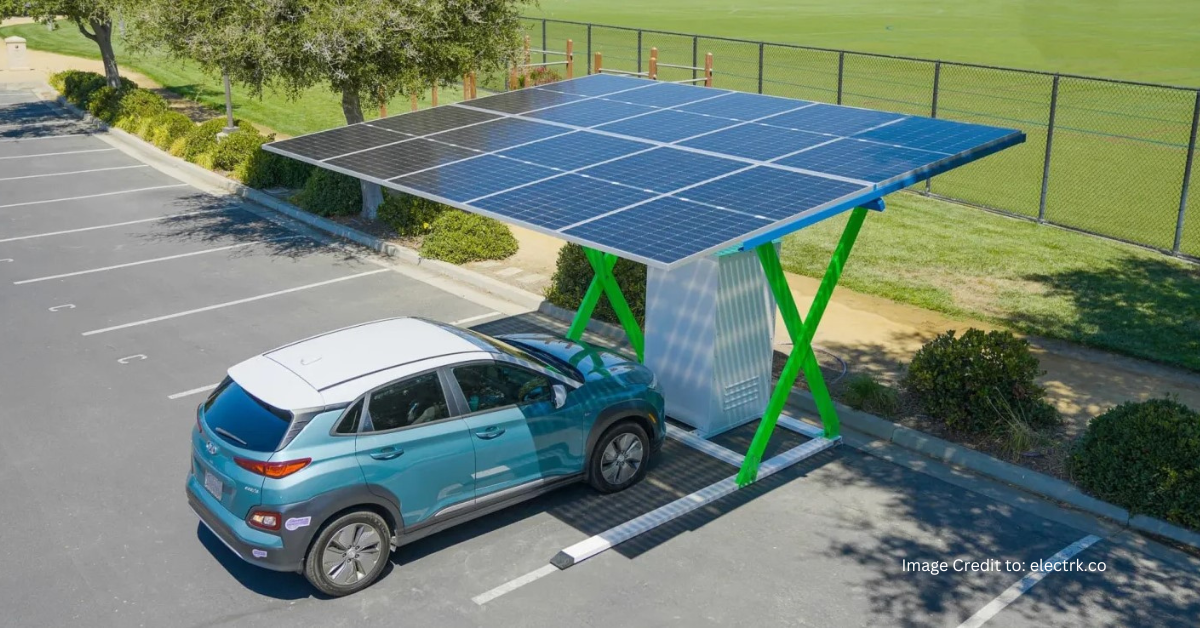The demand for infrastructure for electric vehicle(EV) charging has increased due to the rapid proliferation of electric vehicles (EVs). The charger itself is one of an EV charging station’s most important parts. Electric vehicle (EV) chargers are typically made to accept AC voltage from the grid. However, as solar energy becomes more widely used, there is a growing interest in investigating the viability of directly connecting the DC voltage from solar panels to EV chargers. In order to connect DC voltage from solar panels to an EV charger, this article will analyze its viability, benefits, drawbacks, and viable solutions.
Understanding the Fundamentals of Solar Panels and EV Chargers :
It is critical to grasp both of these components on a fundamental level in order to understand the potential for connecting DC electricity from solar panels to an EV charger. Electric vehicle chargers are in charge of changing grid-supplied AC voltage into the proper DC voltage needed to charge an EV’s battery. Photovoltaic (PV) cells, on the other hand, are used in solar panels to produce DC electricity from sunlight. The DC voltage from solar panels must be converted and regulated to meet the charging requirements in order to use solar energy for charging EVs.
Possibility of EV Chargers Being Connected to DC Voltage:
It is technically possible to connect DC voltage from solar panels to an EV charger. It eliminates the requirement for the conventional setup’s required conversion of DC to AC and then back to DC. Efficiency losses can be decreased by avoiding the AC-DC conversion, leading to a more energy-efficient charging procedure.

Concerns and Challenges :
The DC voltage produced by solar panels must fulfil the voltage requirements of the EV charger in terms of both voltage and current. Additional power electronics, such as DC-DC converters, may be needed to match the voltage levels if the voltage levels are incompatible. Here it is require DC controller charger for regulate constant DC Voltage supply to EV charger input.
b. Power Regulation and Control: The output power of solar panels might fluctuate depending on external factors like sunshine intensity and panel temperature. The right power regulation and control systems must be put in place to maintain the necessary voltage and current levels in order to guarantee safe and effective charging.
c. Grid Interconnection and Synchronization: Solar energy can be supplied back into the grid when it is produced in excess by the panels. To prevent any safety or legal difficulties, synchronization and connections with the grid should be properly examined if solar panels are connected directly to an EV charger.
d. System Protection: To protect the EV charger, solar panels, and entire system from any potential faults or damages, electrical protection methods including overvoltage protection, short-circuit protection, and isolation need to be applied.
Technologies that could be used as solutions:
Maximum Power Point Tracking (MPPT) is a technique that may be used to track the most favorable operating point while taking into account factors like panel temperature and light intensity. MPPT methods can be used to maximize the power output of solar panels.
b. Bidirectional Power Conversion: By implementing bidirectional power conversion, electric vehicle (EV) chargers can receive energy from solar panels and, when needed, feed surplus power back into the grid.
c. Energy Storage Integration: The intermittent character of photovoltaic electricity can be reduced by combining power storage technologies, such as batteries, to ensure a larger consistent electrical supply to the EV charger.
d. Smart Charging and Communication: By combining smart charging algorithms with advanced communication protocols, it is possible to coordinate solar panels, EV chargers, and the grid in a way that optimizes charging schedules and load management.
The total sustainability and efficiency of charging electric vehicles can be improved by connecting DC voltage from solar panels to an EV charger. However, it has other issues that need to be resolved, including grid connections, power control, voltage matching, and system protection. These difficulties can be overcome by utilizing technologies like MPPT, bidirectional power conversion, energy storage integration, and smart charging algorithms. We can lessen dependency on the grid, encourage the use of renewable energy sources, and contribute to a cleaner and greener transportation ecology by successfully integrating solar power into EV charging infrastructure.
You may like: 1. Exploring the Best Solar Panel Choice for Your Home or Factory 2.Understanding the Different Categories of Solar Power Plants 3. Why Wind Power better than Solar Power

5 thoughts on “Supercharge Your Electric Vehicle(EV) : Embrace the Solar-Powered Wheel Revolution”